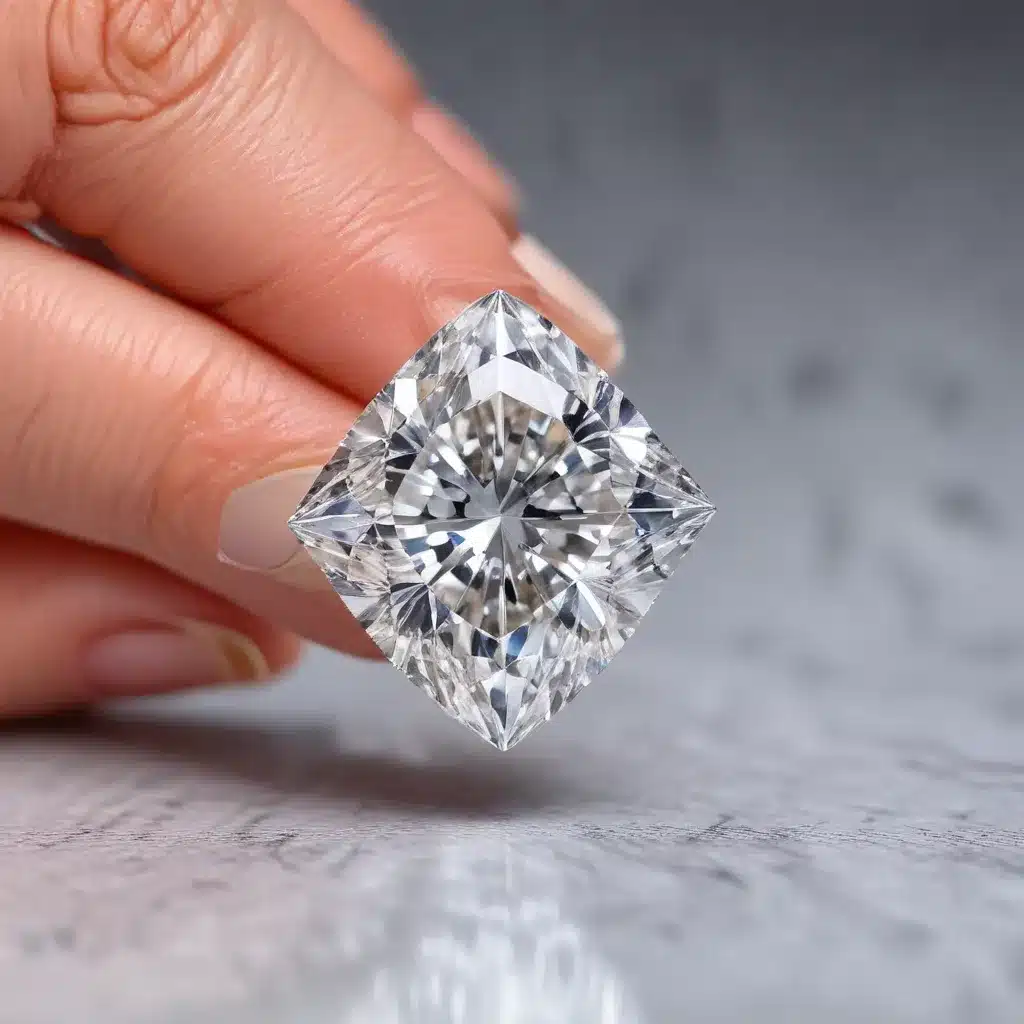
Moissanite, a captivating gemstone with an intriguing history, has emerged as a dazzling alternative to traditional diamonds. Discovered in 1893 by French scientist Henri Moissan, this rare mineral was initially mistaken for diamonds due to its striking resemblance in terms of sparkle and hardness. Yet, as the story of moissanite unfolds, it has carved out a unique niche for itself in the world of fine jewelry, offering unparalleled fire, brilliance, and affordability.
The Characteristics of Moissanite
Composition and Origins
Moissanite is a rare and naturally occurring mineral primarily composed of silicon carbide (SiC). Its unique chemical makeup and crystalline structure endow it with exceptional properties, such as remarkable hardness and resistance to abrasions and scratches. While natural moissanite is exceedingly rare, found primarily in meteorites, the moissanite used in jewelry today is typically lab-created.
Optical Properties
One of the most captivating features of moissanite is its exceptional fire and brilliance. This phenomenon is attributed to the gemstone’s high refractive index, which causes light to disperse and create a mesmerizing display of colors. In fact, moissanite’s refractive index is higher than that of diamonds, resulting in an even more intense and vibrant fire that can captivate the eye.
Durability and Hardness
Moissanite’s durability is another key attribute that makes it an attractive choice for jewelry. With a Mohs hardness rating of 9.25 to 9.5, it is one of the hardest materials known to man, second only to diamonds. This exceptional hardness ensures that moissanite jewelry will withstand the test of time, maintaining its brilliant fire and luster for generations to come.
Comparison to Diamond
Similarities and Differences
When compared to diamonds, moissanite shares several similarities in terms of its optical properties and overall appearance. Both gemstones are renowned for their exceptional fire and brilliance, captivating the eye with their dazzling sparkle. However, moissanite’s refractive index and dispersion are slightly higher than that of diamonds, resulting in an even more vivid and mesmerizing display of light.
Cost Considerations
One of the most significant advantages of moissanite is its affordability. Compared to diamonds, moissanite can cost a fraction of the price, making it an attractive option for those seeking the luxury of a diamond-like gemstone without the hefty price tag. For example, a one-carat moissanite can cost several times less than a comparable diamond, allowing buyers to consider larger and higher-quality stones within their budget.
Ethical and Eco-Friendly Advantages
In addition to its affordability, moissanite also offers ethical and environmental benefits over traditional diamonds. As a lab-created gemstone, moissanite eliminates the need for intensive mining operations, reducing the impact on the environment and ensuring a conflict-free supply chain. This aligns with the growing demand for sustainable and ethically-sourced jewelry options.
Moissanite’s Unique Appeal
Brilliance and Fire
Moissanite’s exceptional brilliance and fire are the primary reasons for its growing popularity in the jewelry market. The gemstone’s ability to disperse light and create a captivating display of colors sets it apart from other gemstones, rivaling the visual allure of diamonds. This unique optical property, combined with its durability, makes moissanite a highly sought-after choice for those seeking a visually stunning and long-lasting jewelry piece.
Customization Options
Moissanite’s versatility extends beyond its optical properties, as it offers a wide range of customization options for jewelry enthusiasts. From classic round brilliant cuts to contemporary cushion or oval shapes, moissanite can be fashioned into a variety of styles to suit diverse personal preferences. Additionally, the gemstone can be set in a range of precious metals, from gold to platinum, allowing for the creation of truly one-of-a-kind jewelry pieces.
Suitability for Jewelry
Moissanite’s exceptional hardness and resistance to wear make it an ideal choice for everyday jewelry, particularly engagement rings and other pieces that undergo frequent use. Its durability ensures that the gemstone will maintain its brilliant fire and luster for years to come, without the risk of scratches, chips, or other forms of damage that can plague softer gemstones.
The Evolution of Moissanite
Historical Discoveries
The story of moissanite dates back to its serendipitous discovery in 1893 by French scientist Henri Moissan. While examining rock samples from the Meteor Crater in Arizona, Moissan stumbled upon tiny, sparkling crystals that he initially believed to be diamonds. However, after further analysis, he determined that these crystals were a new, unique mineral – silicon carbide, which would later be named moissanite in his honor.
Technological Advancements
Over the years, the development of lab-created moissanite has been a significant milestone in the gemstone’s evolution. Through advanced manufacturing techniques, scientists were able to produce synthetic moissanite that closely mirrored the optical and physical properties of the natural mineral. This breakthrough paved the way for moissanite to become a more accessible and affordable alternative to diamonds, catering to a wider range of consumers.
Increasing Popularity
As more people discover the captivating qualities of moissanite, its popularity has steadily risen within the jewelry industry. Consumers are drawn to the gemstone’s exceptional fire and brilliance, as well as its cost-effective and environmentally-friendly nature. This growing demand has fueled the continued development and refinement of moissanite, ensuring that it remains a compelling choice for those seeking a beautiful and sustainable gemstone option.
In conclusion, the journey of moissanite, from its serendipitous discovery to its current position as a popular diamond alternative, is a testament to the remarkable properties and potential of this captivating gemstone. With its unparalleled fire, brilliance, and durability, coupled with its affordability and ethical advantages, moissanite has undoubtedly earned its place as a true gem of the modern jewelry landscape. As the demand for sustainable and visually stunning gemstone options continues to grow, moissanite’s allure is sure to only continue to shine brighter.

